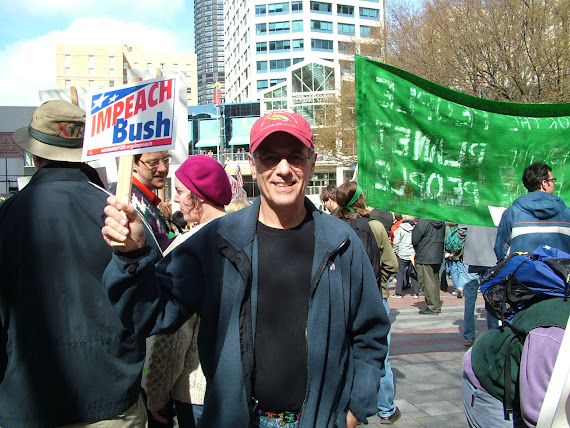It is unlawful for anyone employed by or associated with any enterprise engaged in, or the activities of which affect, interstate or foreign commerce, to conduct or participate, directly or indirectly, in the conduct of such enterprise's affairs through a pattern of racketeering activity or collection of unlawful debt. 18 U.S.C.A. § 1962(c) (West 1984). The Racketeer Influenced and Corrupt Organization Act (RICO) was passed by Congress with the declared purpose of seeking to eradicate organized crime in the United States. Russello v. United States, 464 U.S. 16, 26-27, 104 S. Ct. 296, 302-303, 78 L. Ed. 2d 17 (1983); United States v. Turkette, 452 U.S. 576, 589, 101 S. Ct. 2524, 2532, 69 L. Ed. 2d 246 (1981). A violation of Section 1962(c), requires (1) conduct (2) of an enterprise (3) through a pattern (4) of racketeering activity. Sedima, S.P.R.L. v. Imrex Co., 473 U.S. 479, 496, 105 S. Ct. 3275, 3285, 87 L. Ed. 2d 346 (1985).
A more expansive view holds that in order to be found guilty of violating the RICO statute, the government must prove beyond a reasonable doubt: (1) that an enterprise existed; (2) that the enterprise affected interstate commerce; (3) that the defendant was associated with or employed by the enterprise; (4) that the defendant engaged in a pattern of racketeering activity; and (5) that the defendant conducted or participated in the conduct of the enterprise through that pattern of racketeering activity through the commission of at least two acts of racketeering activity as set forth in the indictment. United States v. Phillips, 664 F. 2d 971, 1011 (5th Cir. Unit B Dec. 1981), cert. denied, 457 U.S. 1136, 102 S. Ct. 1265, 73 L. Ed. 2d 1354 (1982).
An "enterprise" is defined as including any individual, partnership, corporation, association, or other legal entity, and any union or group of individuals associated in fact although not a legal entity. 18 U.S.C.A. § 1961(4) (West 1984). Many courts have noted that Congress mandated a liberal construction of the RICO statute in order to effectuate its remedial purposes by holding that the term "enterprise" has an expansive statutory definition. United States v. Delano, 825 F. Supp. 534, 538-39 (W.D.N.Y. 1993), aff'd in part, rev'd in part, 55 F. 3d 720 (2d Cir. 1995), cases cited therein.
"Pattern of racketeering activity" requires at least two acts of racketeering activity committed within ten years of each other. 18 U.S.C.A. § 1961(5) (West 1984). Congress intended a fairly flexible concept of a pattern in mind. H.J., Inc. v. Northwestern Bell Tel. Co., 492 U.S. 229, 239, 109 S. Ct. 2893, 2900, 106 L. Ed. 2d 195 (1989). The government must show that the racketeering predicates are related, and that they amount to or pose a threat of continued criminal activity. Id. Racketeering predicates are related if they have the same or similar purposes, results, participants, victims, or methods of commission, or otherwise are interrelated by distinguishing characteristics and are not isolated events. Id. at 240, 109 S. Ct. at 2901; Ticor Title Ins. Co. v. Florida, 937 F. 2d 447, 450 (9th Cir. 1991). Furthermore, the degree in which these factors establish a pattern may depend on the degree of proximity, or any similarities in goals or methodology, or the number of repetitions. United States v. Indelicato, 865 F. 2d 1370, 1382 (2d Cir.), cert. denied, 493 U.S. 811, 110 S. Ct. 56, 107 L. Ed. 2d 24 (1989).
Continuity refers either to a closed period of repeated conduct, or to past conduct that by its nature projects into the future with a threat of repetition. H.J., Inc., 492 U.S. at 241-42, 109 S. Ct. at 2902. A party alleging a RICO violation may demonstrate continuity over a closed period by proving a series of related predicates extending over a substantial period of time. Id. Predicate acts extending over a few weeks or months and threatening no future criminal conduct do not satisfy this requirement as Congress was concerned with RICO in long-term criminal conduct. Id.
As to the continuity requirement, the government may show that the racketeering acts found to have been committed pose a threat of continued racketeering activity by proving: (1) that the acts are part of a long-term association that exists for criminal purposes, or (2) that they are a regular way of conducting the defendant's ongoing legitimate business, or (3) that they are a regular way of conducting or participating in an ongoing and legitimate enterprise. Id.
When a RICO action is brought before continuity can be established, then liability depends on whether the threat of continuity is demonstrated. Id. However, Judge Scalia wrote in his concurring opinion that it would be absurd to say that "at least a few months of racketeering activity. . .is generally for free, as far as RICO is concerned." Id. at 254, 109 S. Ct. at 2908. Therefore, if the predicate acts involve a distinct threat of long-term racketeering activity, either implicit or explicit, a RICO pattern is established. Id. at 242, 109 S. Ct. at 2902.
The RICO statute expressly states that it is unlawful for any person to conspire to violate any of the subsections of 18 U.S.C.A. § 1962. The government need not prove that the defendant agreed with every other conspirator, knew all of the other conspirators, or had full knowledge of all the details of the conspiracy. Delano, 825 F. Supp. at 542. All that must be shown is: (1) that the defendant agreed to commit the substantive racketeering offense through agreeing to participate in two racketeering acts; (2) that he knew the general status of the conspiracy; and (3) that he knew the conspiracy extended beyond his individual role. United States v. Rastelli, 870 F. 2d 822, 828 (2d Cir.), cert. denied, 493 U.S. 982, 110 S. Ct. 515, 107 L. Ed. 2d 516 (1989).
Source: United States Attorney Manual, Title 9, Criminal Resources Manuel, 109 RICO
Thursday, November 22, 2007
Subscribe to:
Post Comments (Atom)


No comments:
Post a Comment